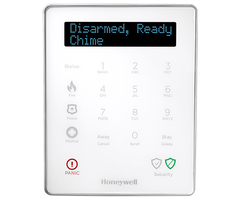Total Connect 2.0 Unable to Sync Tuxedo/VAM Automation - Issue Resolved!
Posted By Julia RossUpdate 12/02/21:
We have confirmed with Resideo and at least one customer that the issues regarding the syncing of Automation between all versions of the Tuxedo Keypads, and the VAM have been resolved and that remote control of Z-Wave devices has returned to normal. Users should now be able to remotely control Z-Wave Automation Devices during any Total Connect 2.0 session. Any Alarm Grid customer that notices issues like this in the future, please report it to support@alarmgrid.com.
Update 11/26/21:
On Tuesday of this week, Resideo announced an update meant to fix this issue. Apparently, it fixed the portion of the issue where all Automation Syncs were failing, but did not address the issue with being unable to control Z-Wave Devices remotely.
There is something of a workaround for this portion of the issue at this time. During the TC2 session where a successful Automation Sync occurs, you can control Z-Wave devices remotely. Once you end that TC2 session and begin another one, you will lose that ability. So, for now, if you need to control a Z-Wave device remotely, perform a sync, and once you see in the Activity Log that the Automation Sync was successful, you will be able to control Z-Wave devices until the current TC2 session ends. Stay tuned and we will provide further updates as this issue is resolved.
Original Post:
In the last couple of weeks, Alarm Grid has noticed several customers with VAM and Tuxedo Keypads (all versions) having trouble syncing Z-Wave devices with Total Connect 2.0. This prevents newly added Z-Wave devices from showing up in TC2, though local control at the device is still available.
This issue doesn't seem to affect Total Connect 2.0 accounts associated with AiO (All-in-One) panels such as the Lyric Controller and the Honeywell Home PROA7PLUS. Accounts with these panel types should be working fine. It is unknown exactly what the problem is, and there is currently no workaround available. We've been in touch with Resideo and Honeywell Home and they are aware of the problem, but there is no Estimated Time of Resolution (ETR) for a fix.
You can continue to add and remove Z-Wave devices locally at the VAM or Tuxedo. But any changes that are made locally at the Z-Wave controller will not be synced to Total Connect 2.0. This means that any device deleted locally will continue to show up in TC2, and any device added locally will not show up in Total Connect 2.0 until this issue is resolved and a successful automation sync occurs.
Any device that currently shows up in Total Connect 2.0, and still exists in the Tuxedo or VAM CANNOT be controlled remotely through TC2. When an attempt to perform an Automation Sync occurs, there is no Automation Sync Failed, or Automation Sync Successful message displayed in TC2 Activity. Status changes from the Z-Wave device to TC2 seem to be coming through fine. It's only the sync process and remote control that seem to be having issues.
Alarm Grid is working with Resideo and Honeywell Home, and as soon as this issue is resolved, we'll post about it here. We posted information earlier this year about the Tuxedo Keypads and VAM Automation Controllers not updating the weather properly. We don't know if this current issue is related to the previous one, but we hope that it will be resolved soon. Stay tuned to our blog for updates.










